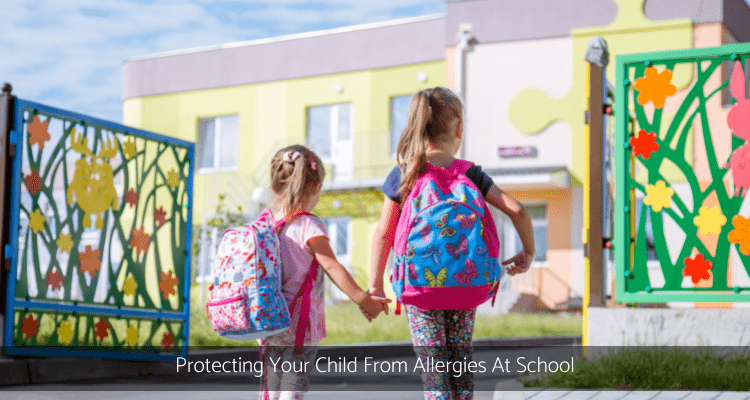A major concern for many parents is protecting their child from allergies at school. As a parent while you can’t actually control the environment at school, you can take several steps to safeguard your child from allergy triggers and ensure that he or she gets the right medical treatment if an allergic reaction does occur.
Millions of children below the age of 18 years suffer from food allergies. Common food items such as milk, eggs, peanuts, walnuts, almonds, fish, and wheat can in some children trigger asthma and life-threatening allergy attacks. Dust, dust-mites, mould and mildew are some of the other potentially harmful allergens.
If your child is in preschool or early primary school, he or she cannot be expected to take care of themselves. This is where your child’s school can play an important role.
A good relationship with the school staff based on trust and communication is essential for keeping your child safe from allergies at school. Here is what you can do to inform the school about the specific needs of your child.
1. Get a medical note from your doctor
Request your doctor to issue a letter confirming the type allergy your child has, possible triggers, symptoms, as well as prescribed medication in case of an allergic reaction. Share a copy of the letter with your child’s care providers, which should include the school, day care centre, nanny and the extended family member who takes care of your child.
2. Discuss your child’s condition
Discuss your child’s allergies with the teacher and school nursing staff. Educate them on avoiding, recognizing, and managing your child’s allergies at school. Meet the principal to update him/ her on your concerns. Request that you be informed of any changes in the nursing staff or the class teacher. Stay in regular touch with staff that routinely interacts with your child.
3. Ask questions about the school’s allergy policy
The allergy medication should be easily accessible for treating kids with allergies. Seek answers to the following questions from the school principal:
– Who at the school is authorised to administer allergy medication?
– Where is the medication stored?
– Do they have the right equipment to administer medicine in the correct doses?
– What is the care plan for children with allergies at school, especially during excursions and extracurricular activities?
4. Talk to your child about food allergies
It is important to regularly talk to your child about what foods are safe to eat and which foods can make them sick. Explain that he or she must only eat food cooked at home, and not eat food brought by other children at school or without approval from mummy and daddy.
As your child grows older, share as much information with him or her about the allergic condition and precautions to be taken. It is equally important that you do not pass on your ‘fear of what may go wrong’ to your child. It is only when you feel assured in the fact that the allergy is manageable, and that there is a secure future for your child, will you be able to give your child the confidence to live as normal a life as possible.
Here are some of our previous blog posts on allergy prevention that you may also find helpful-
10 Ways to Minimise Allergy Symptoms in the Winter
photo credit – phaitoon, freedigitalphotos.net
Author
-
We’re glad you’re here. We’re Carol and Tony, founders of one of the longest running Healthy Home Blogs in the world, Mitey Fresh Australia. We’ve been on this journey for the last 25 years and are passionate about helping families sift through health hazards and triggers like allergens, mould, water damage, chemicals and EMFs, to get clarity about what’s toxic and what’s not so they can create a healthy and happy home for their family they love. Each month, people visit this blog seeking focus on the health and wellbeing of their loved ones, sustainable and effective practice tips and guides, to help create and manage healthier indoor spaces, improve the built environment that is pleasing to the senses and support healthy living and nature, every day. Starting this blog was to help change people’s lives, one family at a time, and we can’t wait to share how its allowed us to stand next to you and show you how interpreting these synergies between buildings and the environment they are built in will impact upon the health and well-being of those who occupy them. Find out more about Healthy Homes and what this blog can do for you!





